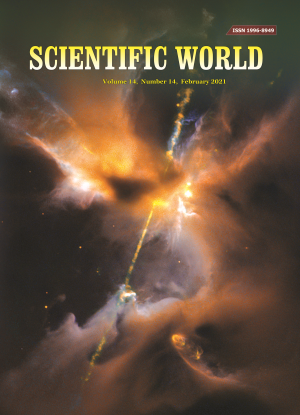Hydrochemical Assessment Of Jhilmila Lake, Kanchanpur, Nepal
DOI:
https://doi.org/10.3126/sw.v14i14.35023Keywords:
Hydrochemical parameters, Water quality assessment, Water contamination, Jhilmila lakeAbstract
Freshwater contamination remains a challenging issue for the sustainable management of wetland ecosystems. This study aims to evaluate the water quality of Jhilmila Lake, Kanchanpur, Nepal by adopting standard test procedures, geochemical indices, and multivariate statistical analysis. The surface water samples were collected during the postmonsoon season in 2018 to assess the hydrochemical parameters such as pH, electrical conductivity (EC), total dissolved solids (TDS) and dissolved oxygen (DO), ammonium (NH4+ ), sodium (Na+), potassium (K+), calcium (Ca2+), magnesium (Mg2+), chloride (Cl-), sulphate (SO42-), nitrate (NO3-), phosphate (PO43-), bicarbonate (HCO3-) and total hardness (TH). The EC ranged from 162-190 µS/cm while TDS was 87-101 mg/L. The concentration of DO in the lake was in the range of 4.77-6.21 mg/L, indicated mild organic pollution. Moreover, the results revealed the moderate alkaline nature of water with the pattern of average ionic dominance of Ca2+>Na+>Mg2+ >K+>NH4+ for cations, and HCO3˗> Cl-> SO42- > NO3- > PO43- for anions. The principal component analysis demonstrated four major components indicating the association of EC, TDS, Ca2+, Mg2+, and HCO3- ; Na+ , PO43- and SO42-; NO3- and K+ ; and Cl- for PC1, PC2, PC3, and PC4, respectively exhibiting both the geogenic and anthropic origin. Overall, the Jhilmila Lake was less polluted, and all the measured water quality parameters were found within permissible limits in terms of drinking purposes. The findings of this study could help for the sustainable management of the lake by providing better insights into the water quality and hydrochemistry of the lake.




